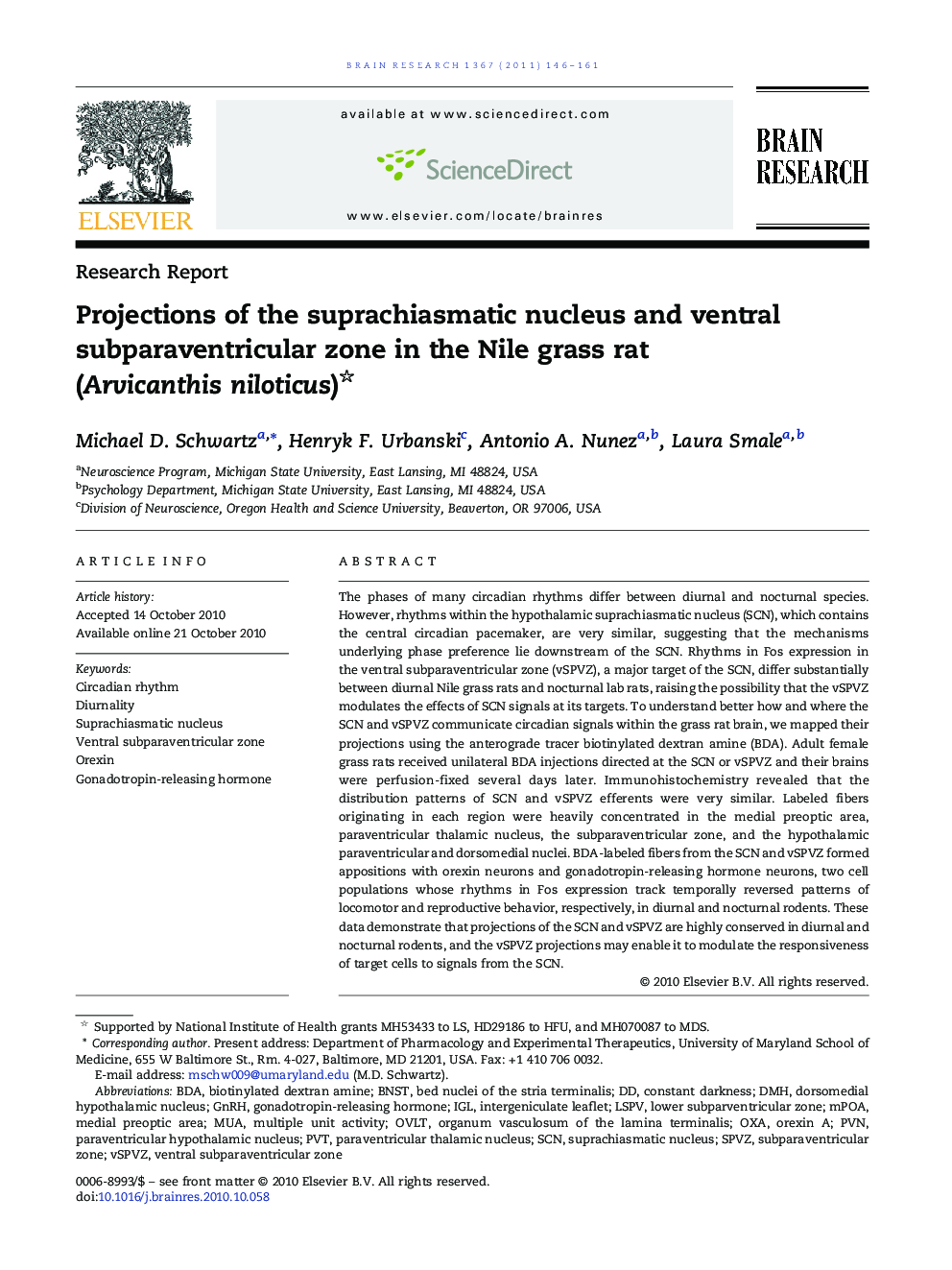| کد مقاله | کد نشریه | سال انتشار | مقاله انگلیسی | نسخه تمام متن |
|---|---|---|---|---|
| 6265317 | 1614072 | 2011 | 16 صفحه PDF | دانلود رایگان |

The phases of many circadian rhythms differ between diurnal and nocturnal species. However, rhythms within the hypothalamic suprachiasmatic nucleus (SCN), which contains the central circadian pacemaker, are very similar, suggesting that the mechanisms underlying phase preference lie downstream of the SCN. Rhythms in Fos expression in the ventral subparaventricular zone (vSPVZ), a major target of the SCN, differ substantially between diurnal Nile grass rats and nocturnal lab rats, raising the possibility that the vSPVZ modulates the effects of SCN signals at its targets. To understand better how and where the SCN and vSPVZ communicate circadian signals within the grass rat brain, we mapped their projections using the anterograde tracer biotinylated dextran amine (BDA). Adult female grass rats received unilateral BDA injections directed at the SCN or vSPVZ and their brains were perfusion-fixed several days later. Immunohistochemistry revealed that the distribution patterns of SCN and vSPVZ efferents were very similar. Labeled fibers originating in each region were heavily concentrated in the medial preoptic area, paraventricular thalamic nucleus, the subparaventricular zone, and the hypothalamic paraventricular and dorsomedial nuclei. BDA-labeled fibers from the SCN and vSPVZ formed appositions with orexin neurons and gonadotropin-releasing hormone neurons, two cell populations whose rhythms in Fos expression track temporally reversed patterns of locomotor and reproductive behavior, respectively, in diurnal and nocturnal rodents. These data demonstrate that projections of the SCN and vSPVZ are highly conserved in diurnal and nocturnal rodents, and the vSPVZ projections may enable it to modulate the responsiveness of target cells to signals from the SCN.
Research HighlightsâºThe SCN projects to the midline hypothalamus and thalamus in grass rats. âºThe grass rat vSPVZ is a major SCN target whose projections parallel the SCN's. âºSCN and vSPVZ fibers contact orexin-A and gonadotropin-releasing hormone neurons. âºPhase-reversed vSPVZ rhythms may modulate responses to SCN signals in grass rats.
Journal: Brain Research - Volume 1367, 7 January 2011, Pages 146-161